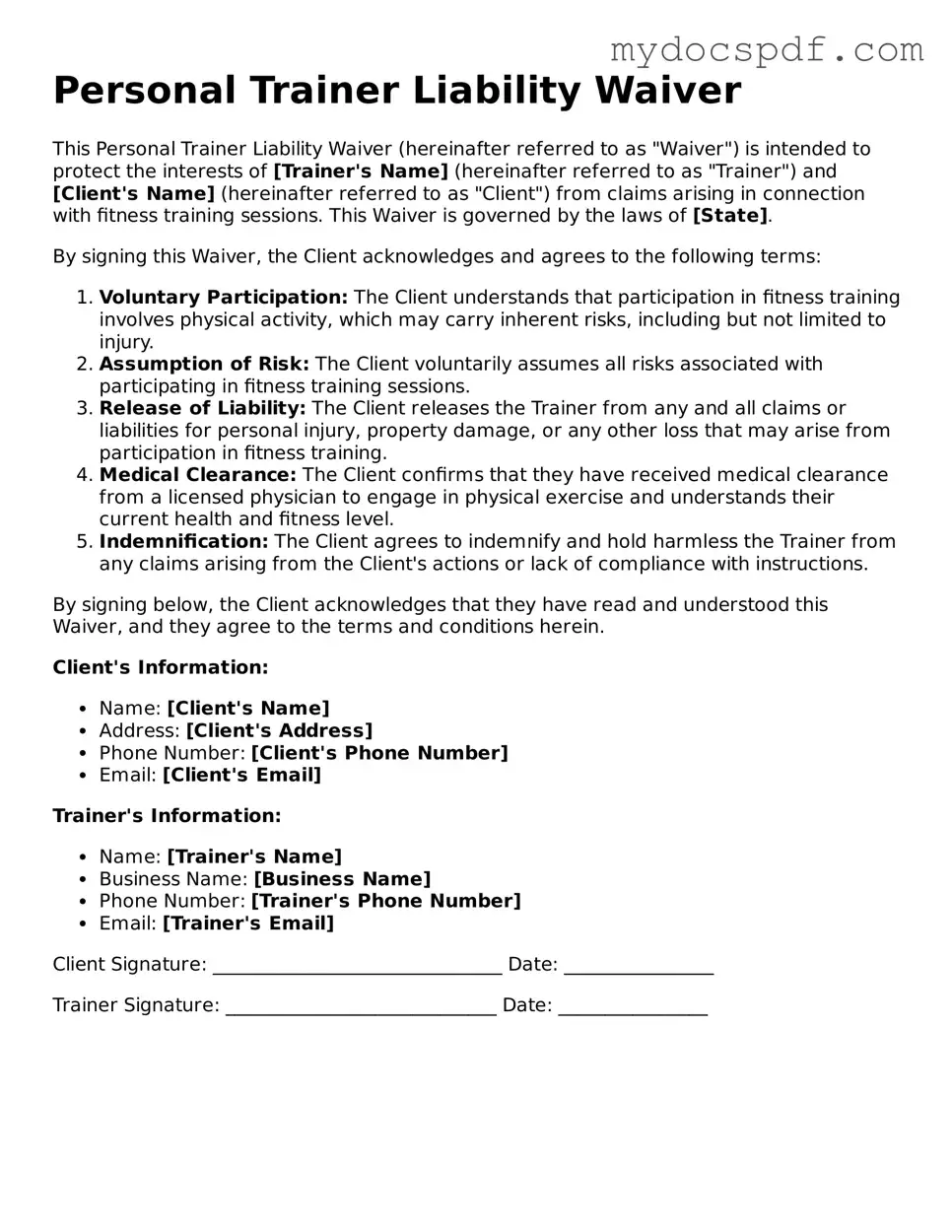Personal Trainer Liability Waiver
This Personal Trainer Liability Waiver (hereinafter referred to as "Waiver") is intended to protect the interests of [Trainer's Name] (hereinafter referred to as "Trainer") and [Client's Name] (hereinafter referred to as "Client") from claims arising in connection with fitness training sessions. This Waiver is governed by the laws of [State].
By signing this Waiver, the Client acknowledges and agrees to the following terms:
- Voluntary Participation: The Client understands that participation in fitness training involves physical activity, which may carry inherent risks, including but not limited to injury.
- Assumption of Risk: The Client voluntarily assumes all risks associated with participating in fitness training sessions.
- Release of Liability: The Client releases the Trainer from any and all claims or liabilities for personal injury, property damage, or any other loss that may arise from participation in fitness training.
- Medical Clearance: The Client confirms that they have received medical clearance from a licensed physician to engage in physical exercise and understands their current health and fitness level.
- Indemnification: The Client agrees to indemnify and hold harmless the Trainer from any claims arising from the Client's actions or lack of compliance with instructions.
By signing below, the Client acknowledges that they have read and understood this Waiver, and they agree to the terms and conditions herein.
Client's Information:
- Name: [Client's Name]
- Address: [Client's Address]
- Phone Number: [Client's Phone Number]
- Email: [Client's Email]
Trainer's Information:
- Name: [Trainer's Name]
- Business Name: [Business Name]
- Phone Number: [Trainer's Phone Number]
- Email: [Trainer's Email]
Client Signature: _______________________________ Date: ________________
Trainer Signature: _____________________________ Date: ________________
